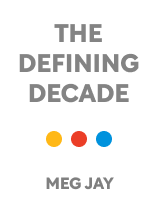

This article is an excerpt from the Shortform book guide to "The Defining Decade" by Meg Jay. Shortform has the world's best summaries and analyses of books you should be reading.
Like this article? Sign up for a free trial here .
How do you define an identity crisis? How can you make the most out of your identity crisis?
It’s not uncommon for people to have an identity crisis in their 20s. Knowing how to define an identity crisis and when you’re having one can help you make the most out of it.
Read more about how to define an identity crisis.
Define an Identity Crisis, Then be Productive
All too often, twenty-somethings, feeling lost, retreat into reflection as they try to figure out who they are and by extension, what they should be doing with their lives. This is all part of a classic “identity crisis,” and it’s an important step towards developing your long-term identity. However, reflection is only half the formula for having a successful identity crisis. The other, equally important, piece is experience.
Erik Erickson, a German psychoanalyst, defined the term “identity crisis” in 1950. He encouraged a period of youthful exploration during which a person could collect experiences and try out different paths in life without risk or obligation. The concept has evolved since its inception and is today understood very differently from what Erickson intended.
Very often, people misconstrue the idea of “not committing to a path” as “not exploring any path.” They end up then squandering their twenties in a so-called “Starbucks phase,” during which they hold a series of uninspiring dead-ends jobs, or no job at all, while spending their time in unproductive pursuits like partying, when they should be spending these years collecting instructive experiences.
How to Develop Your Identity Capital
While having your identity crisis, you need to be not only reflecting on your life but also actively accumulating experiences that will form your “identity capital”: the sum of your personal resources. Your identity capital is the collection of things you’ve done long enough or well enough that they become part of who you are. It’s the intangible currency we use to obtain jobs and relationships. It includes quantifiable measurements like your schools, clubs, jobs, hobbies, and degrees. It also includes more unquantifiable things like your temperament, how you approach problems, and how you present yourself to the world through your clothes, your vocabulary, and your personality.
There’s a difference between an entry-level job at a coffee shop and an entry-level job at a film production company, and during your twenties you must actively build your identity capital by seeking out meaningful opportunities rather than place-holding ones. Volunteer with a charity, work as an intern in an industry you’re interested in, or take classes in something you might like to pursue. Avoid unmeaningful experiences that won’t teach you anything and won’t help you build skills.
Twenty-somethings who strike this balance between action and reflection spend their identity crisis accumulating interesting experiences while they are thinking about their path. These people construct stronger identities and end up more satisfied with their lives: better able to manage stress, more in control of their future, and living more original, unique lives.

———End of Preview———
Like what you just read? Read the rest of the world's best book summary and analysis of Meg Jay's "The Defining Decade" at Shortform .
Here's what you'll find in our full The Defining Decade summary :
- Why the twenties are your most important decade
- How you were fooled into thinking it was an extended period of youth and freedom
- Why you should use this decade to find personal and professional success






